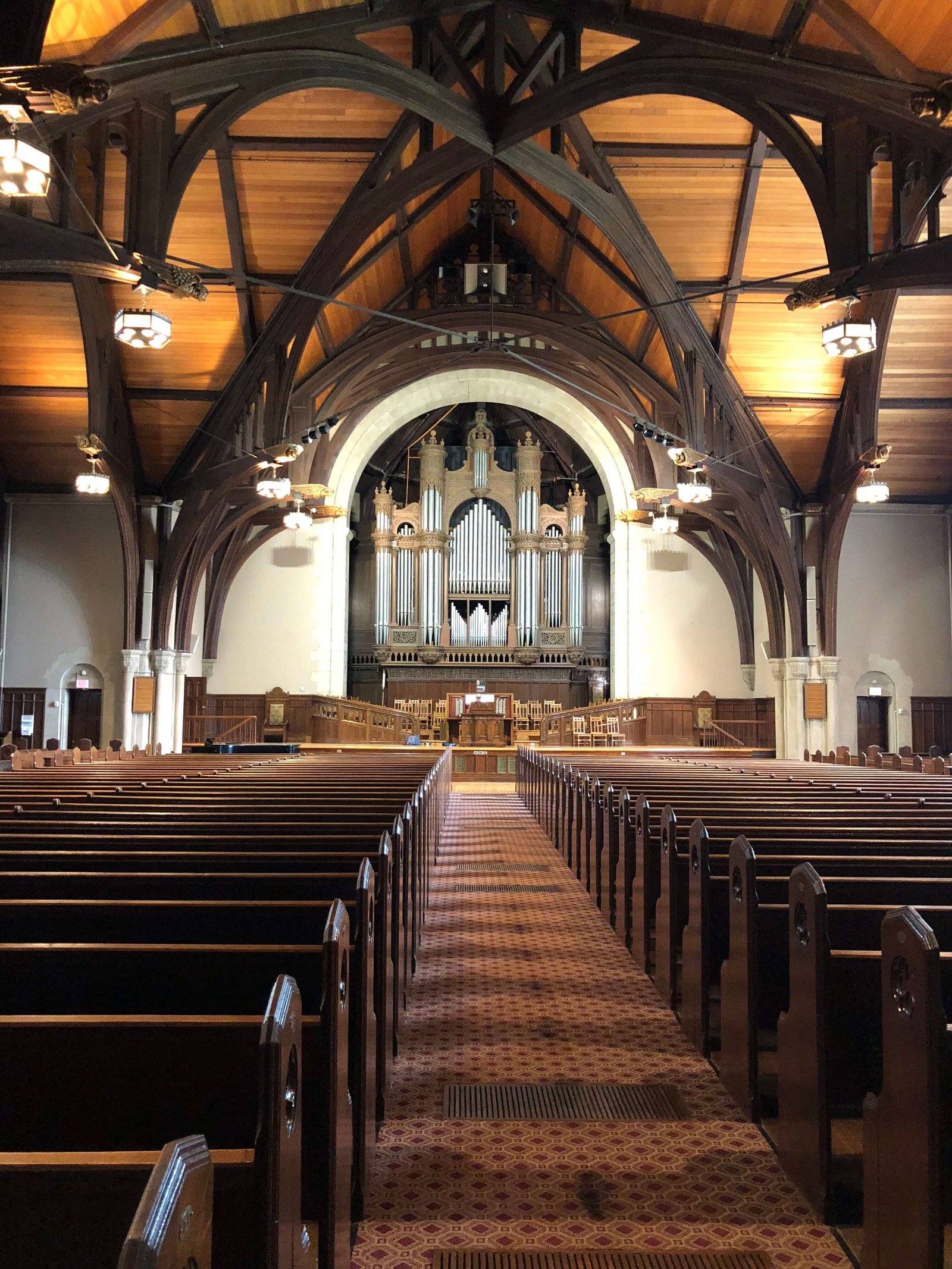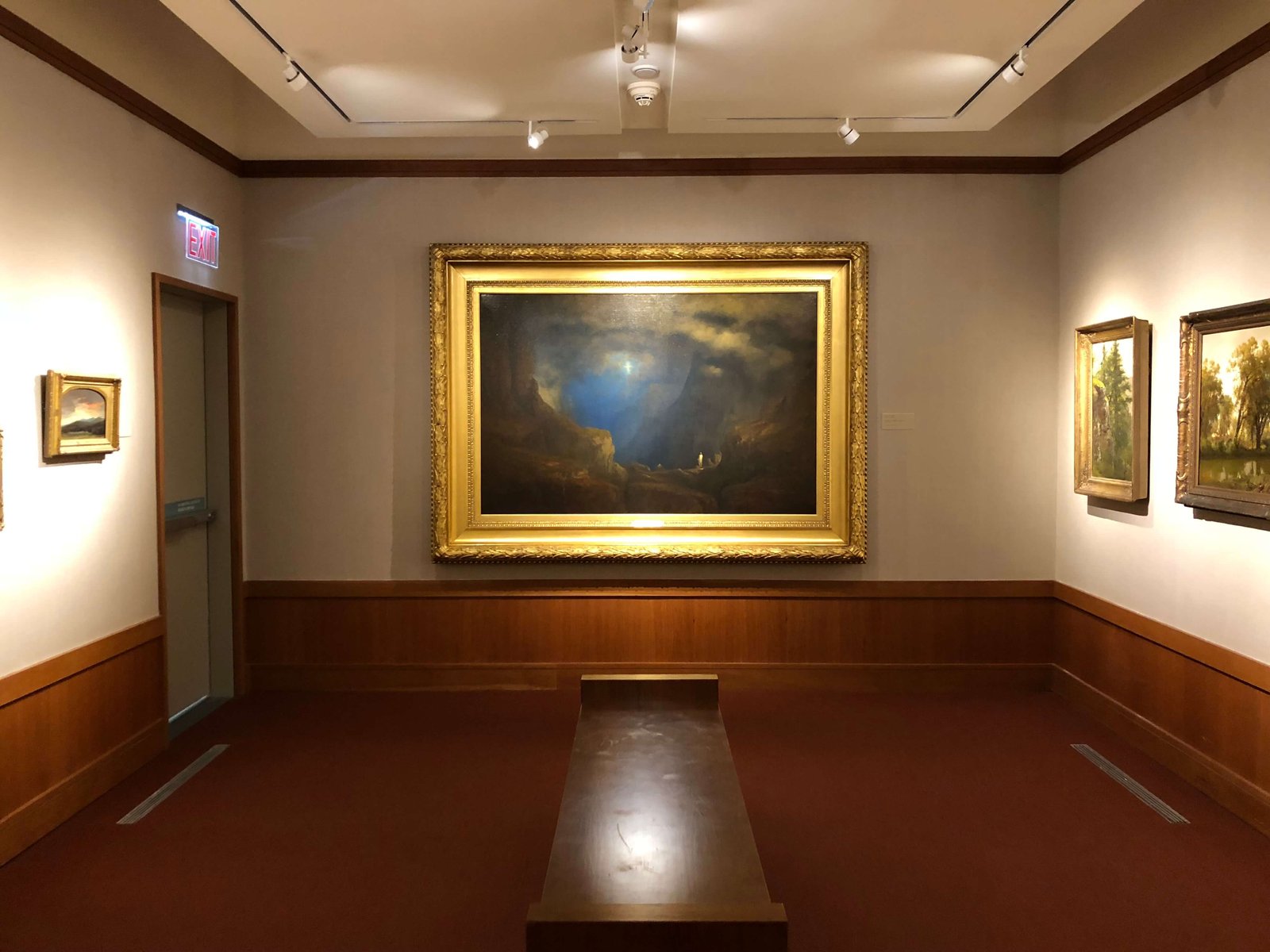
The Frances Lehman Loeb Art Center is a small art museum on the Vassar College campus. The museum contains a little bit of everything, but it’s probably best known for its many Hudson River School paintings, originally collected by college founder Matthew Vassar. The museum owns several thousand Hudson River School works, though it only displays a few dozen at a time.
The rest of the collection includes small quantities of everything from ancient to contemporary. For example, there’s a few pieces of ancient Egyptian, a few of ancient Greek and Roman, one small gallery of medieval art, one of Renaissance and Baroque, etc. I kind of liked this, because it encouraged me to pay closer attention to each piece than I would normally. There’s also a sculpture garden and several galleries of changing exhibitions. The main temporary exhibition at the moment is Northern European old master prints and drawings from the college’s collection.
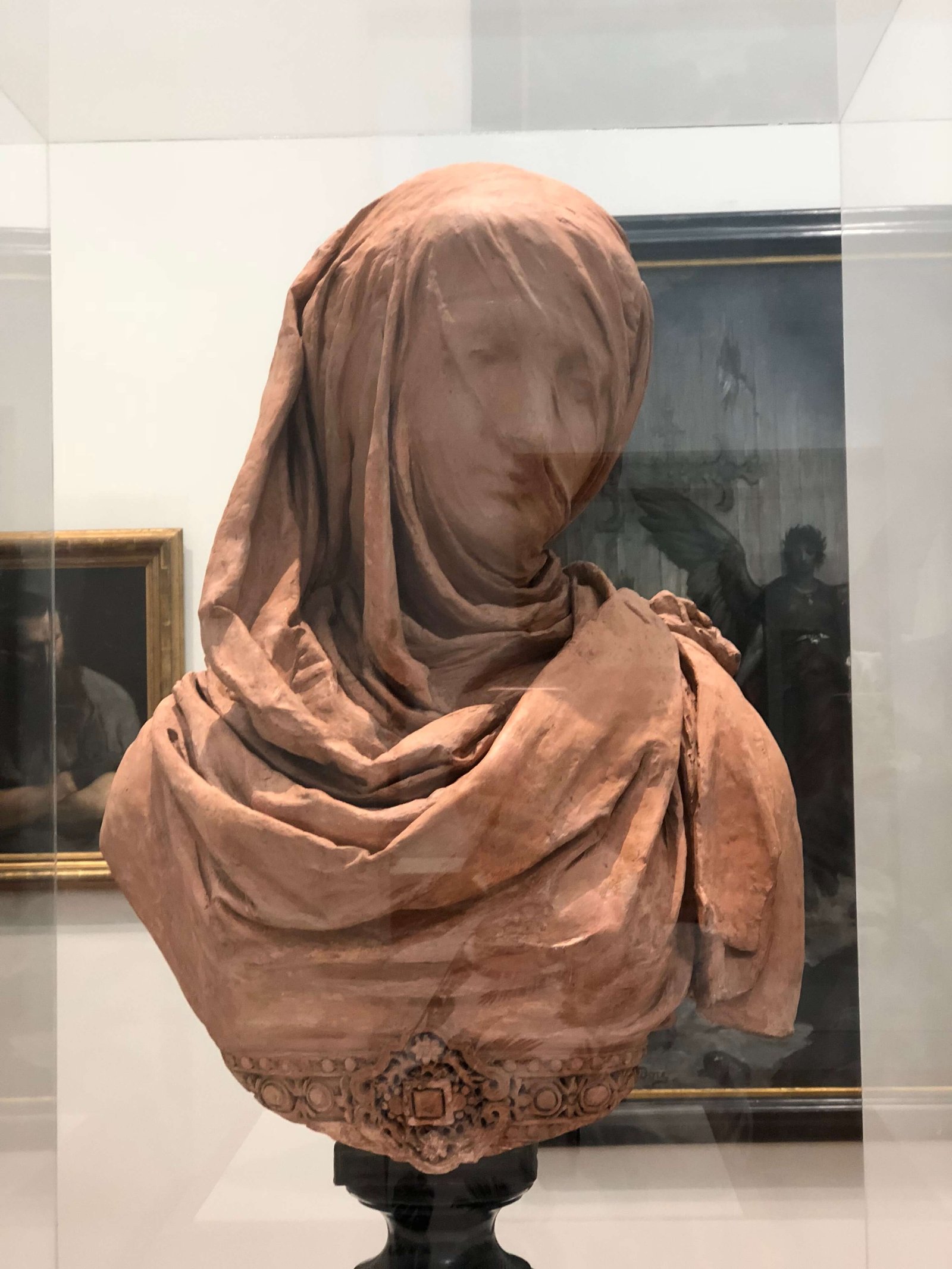
Hey everybody! I’m just reminding you that everything in a museum is subject to change – exhibitions, artworks on display, opening times, and prices. I can only tell you what the museum was like the last time I was there, which might not stay the same. It’s not only that exhibitions change and prices increase; I’ve revisited museums and found their fundamental personalities to be really different from my last visit (or that half their galleries are closed for renovation). I know how sad a disappointing museum visit can be, so I’m reminding you to check everything out on the museum’s website ahead of time.
Highlights of my visit
- George Inness’s gorgeous and mysterious The Valley of the Shadow of Death (shown at the top of the post). This alone made the drive to Vassar worth it for me. And it was a nice surprise, since I had no idea it would be there.
- A small, temporary exhibition on trompe l’oeil. It included two works by contemporary American artist Gary Schumer, who painted what looked like two Vermeers wrapped in plastic for transport. Looking at them on an angle from the previous gallery (and with no idea that a trompe l’oeil show was in the next room), I was completely convinced that they were mixed media pieces including actual plastic wrap. I didn’t recognize them for what they were until I stood directly in front of them. Amazing!
- I really enjoyed all of the paintings in the 16th and 17th century gallery, which were large and very colorful. Many were of Northern European origin, and they included some spectacular still life displays.
- The Defense of Paris, a 1871 painting by Gustav Dore concerning the violence of the French Commune. A large work painted almost entirely in shades of gray, it’s elegant and haunting at the same time.
- A trippy Florine Stettheimer painting showing people frolicking on sea horses during some kind of aquatic party. I rarely understand what’s going on in Stettheimer‘s work, and I love her for that.
- In the Northern European prints and drawings show, I really enjoyed two works in particular. One was a tiny Rembrandt etching of himself looking surprised. The second was an engraving of a cat by Dutch artist Cornelis Visscher. That cat had more individuality than lots of human subjects I’ve seen in portraits.
- The sculpture garden is really nice to walk around in when the weather is nice. My favorite sculpture was a bronze fountain depicting a young woman riding a fish. She looked like she was having fun.
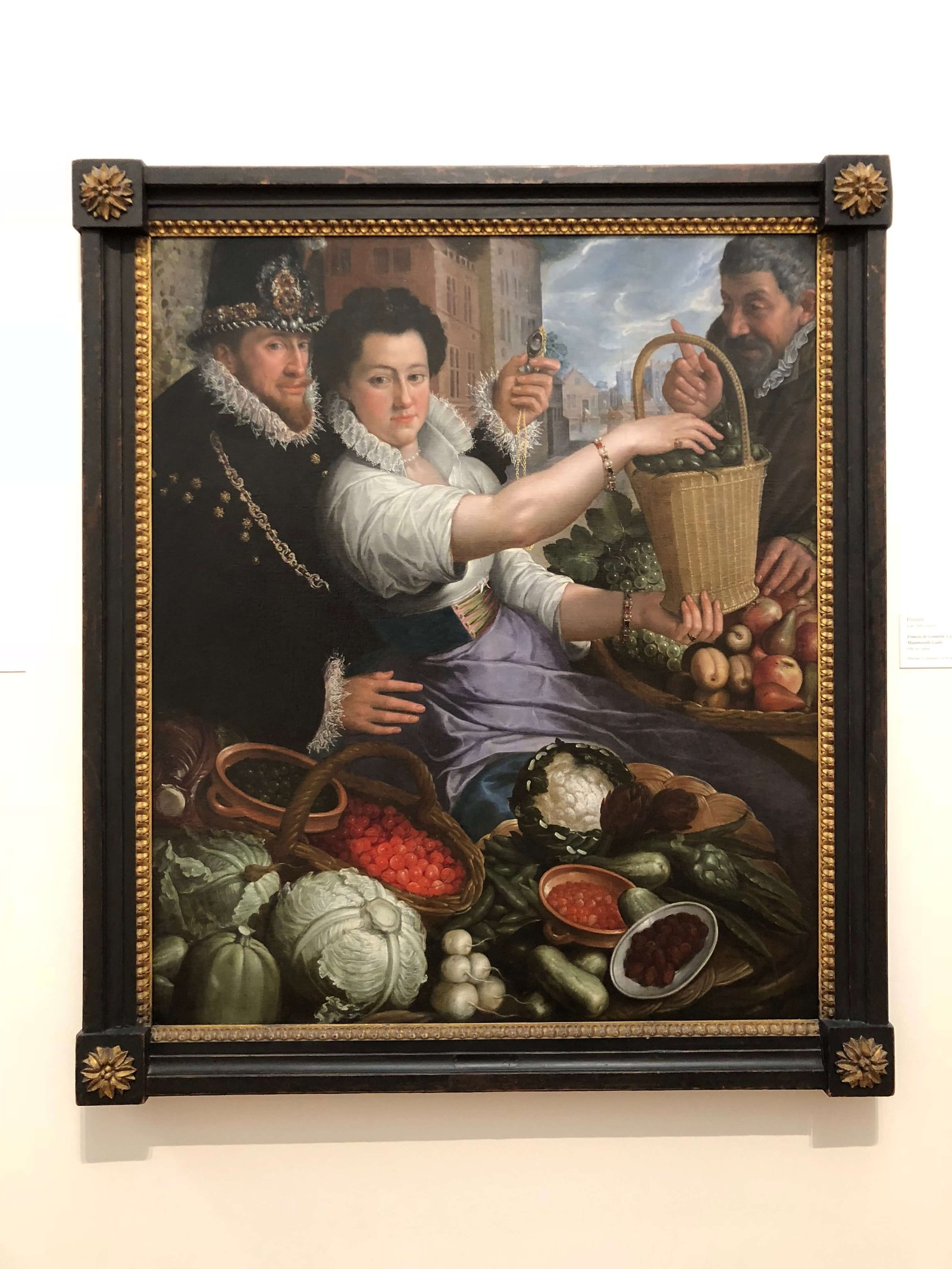
The museum’s biggest surprise wasn’t actually in the museum itself. I stopped to use the bathrooms before leaving, and that required walking through a door and down a hall that connects the museum to the adjacent academic building. I took a wrong turn and ended up facing a staircase. At the top, there was what looked like a massive pair of bronze doors set into the wall. The picture below does them no justice. The Plexiglas guard alone was much taller than I am.
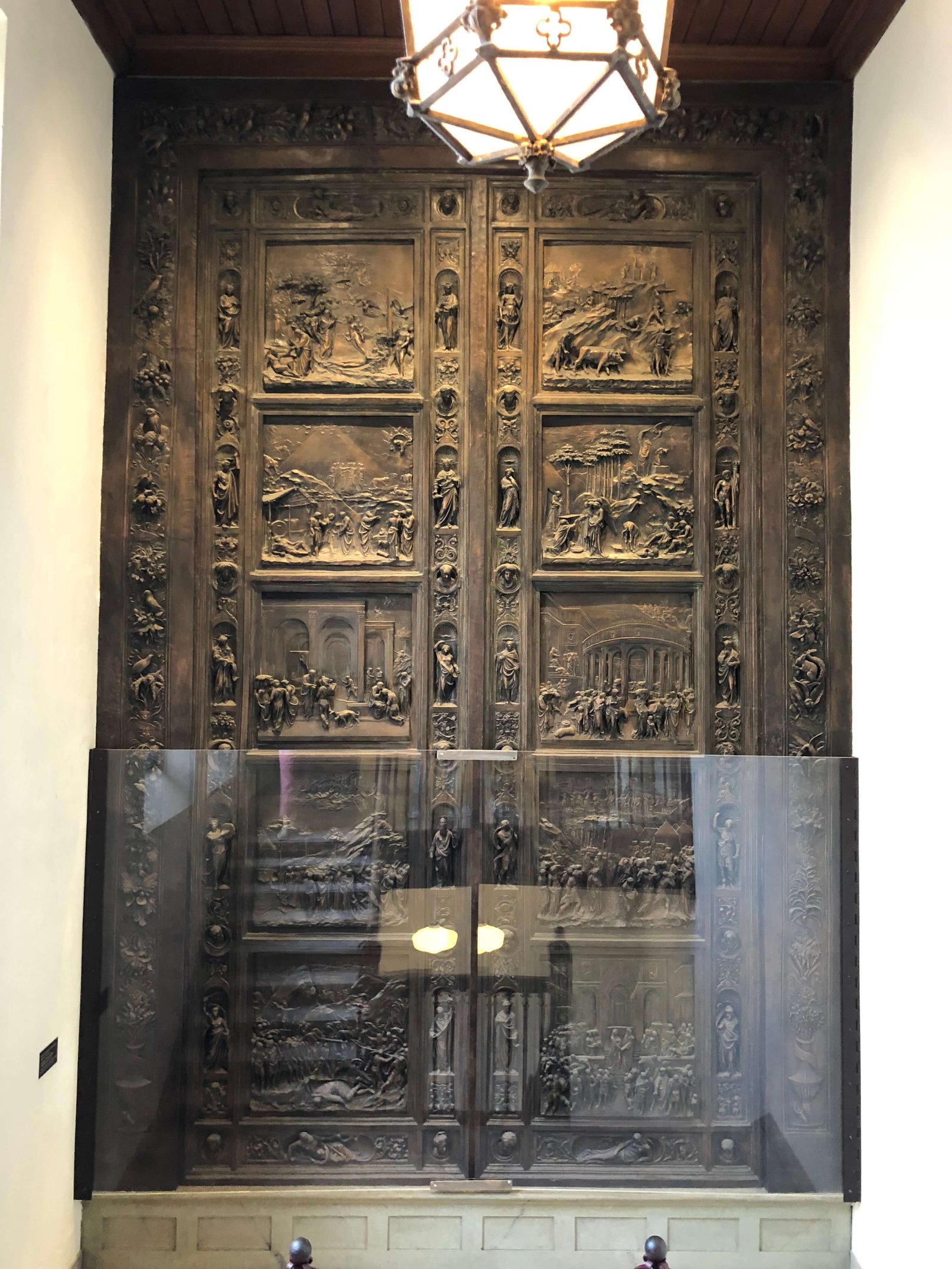
I thought I recognized the doors, but it didn’t make any sense for me to be correct. Then, I saw the wall label and realized that I was. The installation was an 1870 plaster cast of Lorenzo Ghiberti’s famous bronze doors for the Florence Baptistery (c. 1425-52). Since I’ve yet to see the real doors in person, I relished this opportunity to get a sense of them for myself. I knew they were large, but I was definitely not prepared for how large they actually are.
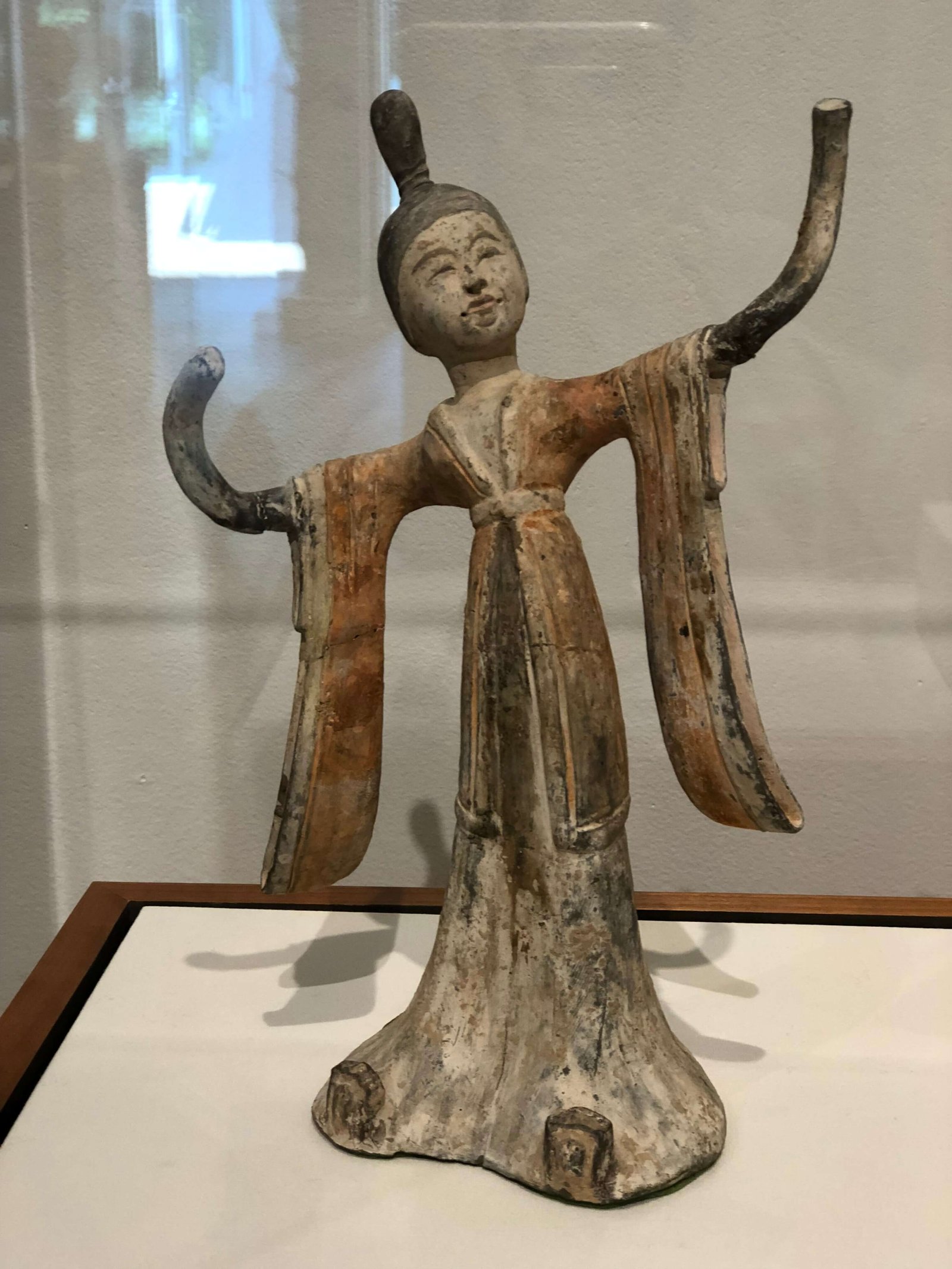
Details
The Frances Lehman Loeb Art Center is located at Vassar College in Poughkeepsie, New York. It’s always free and open to the public. The museum is one of the first buildings just inside Vassar’s gorgeous main gate. There’s free two-hour parking all along the street. I had no trouble getting a spot on a summer weekend, but you might need to seek out alternate parking during the school year. If you visit the museum, also take a few moments to visit the Romanesque Revival chapel nearby. It’s home to some lovely stained glass, including at least two windows by Tiffany Studios, as well as a massive organ and many carved angels on the roof beams.
